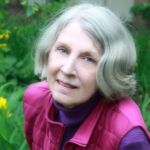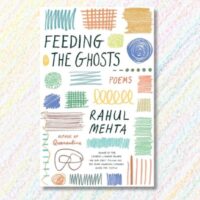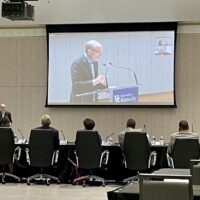In Iceland, they are gearing up for Jólabókaflóð, literally a flood of books intrinsic to holiday celebrations. After the presents are unwrapped on Christmas Eve, in a nation where reading is valued throughout the year, Icelanders nestle into the subartic night by curling up with a new book.
Thanks to University Press of Kentucky, a flood of books for readers of all tastes is available for holiday gifts. One of my favorites, a “tiny little book” by Nikky Finney, is Heartwood, first released as part of University of Kentucky Press New Books for New Readers.
Originally designed for adult literacy students, Heartwood emerged from discussions with a board of brand-new readers, “grown women with grown woman lives,” according to Finney, a National Book Award winner for her poetry collection, Head Off and Split.
For the fiction project, Finney — self-described as “a poet first” — was asked to tell stories about her “new Kentucky home,” where she had lived for six short years. She began her quest by listening to women who were not usually asked to talk about their lives, resulting in a “tiny nest of a book” that examines complexities and contradictions of racism within the context of small towns.
The settings are familiar, including an old church and a beauty parlor, featuring characters who are often reluctant to speak their mind. One character, Jenny, explains it like this: “Sometimes when you live in a small place everybody thinks they have to say and do just like everybody else.”
“In a little place like Stone Creek,” she continues, “it’s really scary to give birth to your own thinking. People can be so mean sometimes if you disagree with them. It’s already so lonely way out there in the country.”
Heartwood is a book suited to book groups, gatherings at libraries, houses of worship, and other places where people might be inspired to engage in honest and open discussion. These are places, according to the story, “The Secrets of Luketown,” where “most folks just go along with everything, because that’s what everybody else is doing.”
For those interested in non-fiction, University Press of Kentucky offers Slavery and Freedom in the Bluegrass State. According to editor Gerald L. Smith, the book delves into aspects of the Commonwealth’s history that “confront the literature and historical narratives that have misrepresented Black voices.”
The compilation of compelling essays begins in Lexington, at 149 North Broadway, the former site of Pullam’s Slave Jail. In the words of historian Brandon R. Wilson, the site represents a history “of the policing and incarceration of Black Kentuckians for the purpose of profit.”
Slavery and Freedom in the Bluegrass State ends with a piece entitled, “Archer Alexander and Freedom’s Memorial,” by Kentucky historian Alicestyne Turley. As Confederate Civil War monuments are being removed around the country, the essay reminds readers of an ironic fact about the Commonwealth’s changing attitudes before, during, and after the Civil War.
“In Kentucky alone, a border state that had remained loyal to the Union,” Turley writes, “there are only nine monuments to the Union cause but more than thirty-seven state monuments to the Confederacy, a count that does not include commemoration of Confederate roads, historic sites, and other Kentucky namesakes.”
Turley is also author of another recent UPKy publication, The Gospel of Freedom: Black Evangelicals and the Underground Railroad.
Political buffs with a special interest in the Bluegrass state, will be interested in another UPKy offering, a biography by Matthew Strandmark, Gatewood: Kentucky’s Uncommon Man.
Gatewood Galbraith ran for governor five times and was a perennial candidate for a slew of other offices, including house of representatives, attorney general, and agriculture commissioner. An unconventional presence in almost any setting, Galbraith was noted for advocacy of legalization of medical and recreational cannabis and industrial hemp.
His rhetorical style was as slouchy as the battered fedora he usually wore. A case in point was the Fancy Farm picnic in 2011, where his address to the raucous crowd began like this: “I’m going to go away from my regular speech for a second and tell you, Governor Beshear, that was the worst darn speech I ever heart anybody give.”
Half-Life of a Secret: Reckoning with a Hidden History takes readers to Tennessee, home of a sixty-thousand acre planned community named Oak Ridge. One of three secret cities constructed by the Manhattan Project during World War II, Oak Ridge played a key role in developing the first atomic bomb, which was dropped on Hiroshima, Japan, August 6, 1945.
Author Emily Strasser offers a unique view of Oak Ridge. Her grandfather, George, worked there as a chemist. Like the other employees, he was subject to tight security restrictions and given minimal information about the mission. Strasser never knew her grandfather; he died a few years before she was born. As a child, however, she spent memorable times at her grandparents’ lake house, twenty miles from Oak Ridge.
Her father, George’s son, told stories about growing up in Oak Ridge that were shrouded in mystery. Nearly everyone worked at one of three government laboratories, and George worked in a lab ambiguously named Y-12.
“My father never visited his father’s office — none of the kids did,” Strasser said. “And George never spoke of his work, though sometimes he carried home papers in locked metal boxes.”
Half-Life of a Secret begins with family history which, for the author, was sparked by a tenth grade history lesson about the historic connections between Oak Ridge and the development of the atomic bomb. Strasser learned about the other “secret cities” involved in the Manhattan Project. The more she learned, the more vivid her imaginings regarding the impact of the bomb on people of Japan, and the long-term consequences on all those, like her grandfather, who were involved in creating it.
With an MFA from University of Minnesota, Strasser’s style is suffused with elements of poetry, supported by rigorous research. Extensive footnotes document each chapter, and the book ends back at the lake house, an “anchor to a contaminated land,” where the saga began for the author.
For book lovers who want to share the uncommon wealth of good books for the holidays, University Press of Kentucky has a special offer on purchases made through January 31.
The University Press of Kentucky (UPK,) scholarly publisher for the Commonwealth of Kentucky, was organized in 1969 as successor to the University of Kentucky Press. The university had sponsored scholarly publication since 1943, and in 1949 the Press was established as a separate academic agency under the university president.
Since the reorganization in 1969, the Press has represented a consortium that now includes all of Kentucky’s state universities, seven of its private colleges, and two historical societies.






